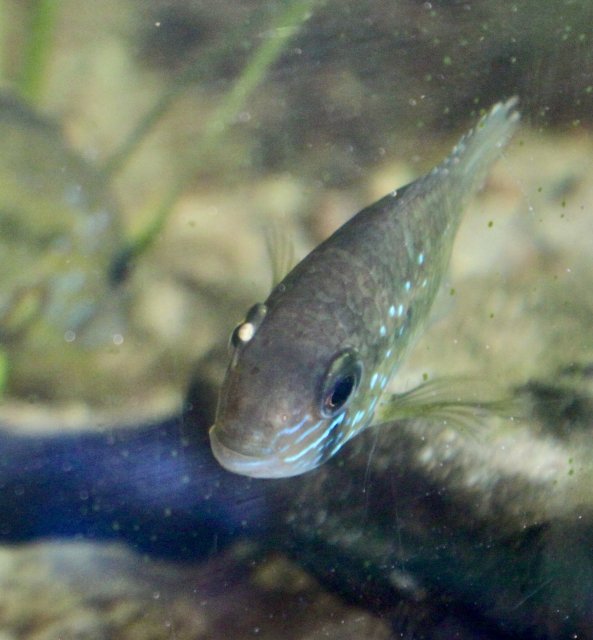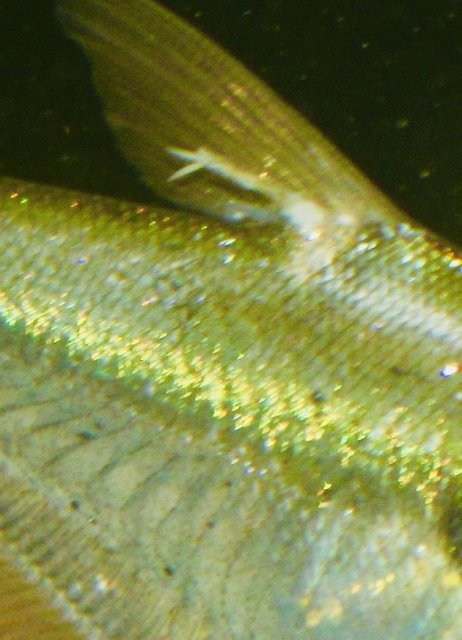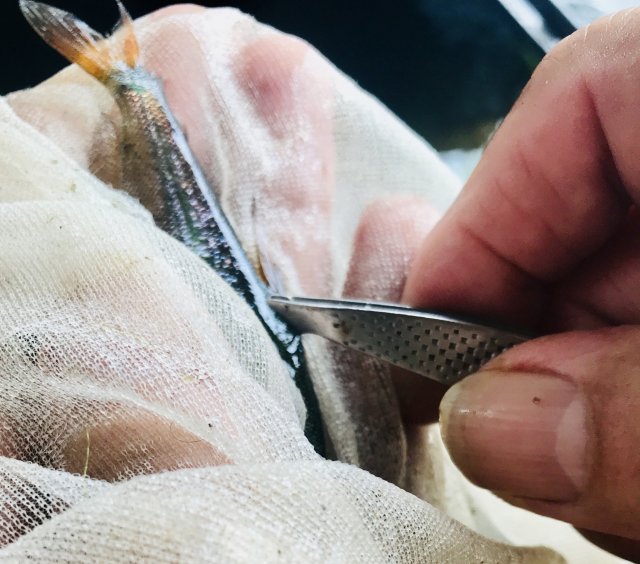You didn't expidate the life cycle, you killed it at that temperature. Expedating without salt or medicine would have caused more ich. Ich has 4 stages in its lifecycle and can be killed in only one with use of medicine. At lower temperature like 60s it's 2 week and at 80 it's 4 days.When I first got my severums, one started to get ich on its fins. I cranked up the heat in three days from 79 to 89. In day three there were no signs of ich and I kept heat up for two weeks.
I didnt use salt (not saying that you shouldn't) just sharing that heat was the key to expediting the life cycle as been said.
ICH!!!!! help
- Thread starter cichlid tank
- Start date
You didn't expidate the life cycle, you killed it at that temperature. Expedating without salt or medicine would have caused more ich. Ich has 4 stages in its lifecycle and can be killed in only one with use of medicine. At lower temperature like 60s it's 2 week and at 80 it's 4 days.
My understanding is that turning up the heat will increase the lifecycle stages of the ich protozoa. That is what I meant. I dont think heat is what "kills" ich as you said, is it?You didn't expidate the life cycle, you killed it at that temperature. Expedating without salt or medicine would have caused more ich. Ich has 4 stages in its lifecycle and can be killed in only one with use of medicine. At lower temperature like 60s it's 2 week and at 80 it's 4 days.
True, about the stage one stage for typical medicines to be effective.
Turning up the heat (but still within a range) shortens the time to complete the life cycle i.e. fast forward it. There is temperature for every living thing that kills it.My understanding is that turning up the heat will increase the lifecycle stages of the ich protozoa. That is what I meant. I dont think heat is what "kills" ich as you said, is it?
True, about the stage one stage for typical medicines to be effective.
ReferenceThe Ich life cycle is temperature dependent. Higher temperatures within its livable range speed up every stage of the life cycle, while the lower temperatures will slow it down. At 18°C/64°F the cycle takes 10-12 days to complete.
It has been found that Ich does not infect new fish at 29.4°C/85°F (Johnson, 1976), stops reproducing at 30°C/86°F (Dr. Nick St. Erne, DVM, pers. comm.), and dies at 32°C/89.5°F (Meyer, 1984), [1]
One thing to consider about ick or other paracites, is their geographical origin.
An ick varient fron Michigan or New York which has evolved to live in certain temps, temps from 50-to 80F may be the perfect reproductive range, but temps above that range may be limiting or lethal
An ick variant that comes from Panama or northern S America may have evolved to tolerate and reproduce, in a drastically different range.
Water temps often swing from lows of mid 70sF to mid 90sF in those countries. So a rise in temp that inhibits New York ick, may be just what Panama ick need.
And with importation of fish from all over the world, the possibility of parasites hitch hiking is highly likely.
I have collected fish in Panama where the water in certain places was bath water hot.
And commonly had fish arrive with an ick spot or 2, in nature ick is an irritant, but once put in the confines of a tank it becomes epidemic and deadly.
For the use of heat with these wild fish, the rise in temp needed would have done more harm to the fish, than the tropical ick.
I have also heard of an ick strain from Lake Tanganyika that has the ability to handle increased osmotic pressure (the mineral content of the lake is dense), so if that African strain is suspected, increased salinity may be needed.
Most research on ick, has been done by north American fish farm interests, so the strains that have developed in warmer countries may have not been taken into account.
An ick varient fron Michigan or New York which has evolved to live in certain temps, temps from 50-to 80F may be the perfect reproductive range, but temps above that range may be limiting or lethal
An ick variant that comes from Panama or northern S America may have evolved to tolerate and reproduce, in a drastically different range.
Water temps often swing from lows of mid 70sF to mid 90sF in those countries. So a rise in temp that inhibits New York ick, may be just what Panama ick need.
And with importation of fish from all over the world, the possibility of parasites hitch hiking is highly likely.
I have collected fish in Panama where the water in certain places was bath water hot.
And commonly had fish arrive with an ick spot or 2, in nature ick is an irritant, but once put in the confines of a tank it becomes epidemic and deadly.
For the use of heat with these wild fish, the rise in temp needed would have done more harm to the fish, than the tropical ick.
I have also heard of an ick strain from Lake Tanganyika that has the ability to handle increased osmotic pressure (the mineral content of the lake is dense), so if that African strain is suspected, increased salinity may be needed.
Most research on ick, has been done by north American fish farm interests, so the strains that have developed in warmer countries may have not been taken into account.
Last edited:

Above and below, are 2 fish a friend collected for me near San Martin in Central Panama in mid 80"F temp water.
Its easy to see a large ick spot on the Andinoacara, and a lernaea (anchor worm) on the tetra.

Before it got out of hand I immediately treated the 180 gal tank with 18 gallons of sea water (bringing the salinity to @ 3.5 ppt).
This took care of the ick, and prevented the lernaea from reproducing. But because that salinity would not kill adult Lernaea, the adults had to be physically removed.

Thank you. That's a great point, I didn't think in that perspective. Mine seems to be dying off at 86 and with salt (around 2lb for 75 gallon), much less visible ich from 2 days ago.One thing to consider about ick or other paracites, is their geographical origin.
An ick varient fron Michigan or New York which has evolved to live in certain temps, temps from 50-to 80F may be the perfect reproductive range, but temps above that range may be limiting or lethal
An ick variant that comes from Panama or northern S America may have evolved to tolerate and reproduce, in a drastically different range.
Water temps often swing from lows of mid 70sF to mid 90sF in those countries. So a rise in temp that inhibits New York ick, may be just what Panama ick need.
And with importation of fish from all over the world, the possibility of parasites hitch hiking is highly likely.
I have collected fish in Panama where the water in certain places was bath water hot.
And commonly had fish arrive with an ick spot or 2, in nature ick is an irritant, but once put in the confines of a tank it becomes epidemic and deadly.
For the use of heat with these wild fish, the rise in temp needed would have done more harm to the fish, than the tropical ick.
I have also heard of an ick strain from Lake Tanganyika that has the ability to handle increased osmotic pressure (the mineral content of the lake is dense), so if that African strain is suspected, increased salinity may be needed.
Most research on ick, has been done by north American fish farm interests, so the strains that have developed in warmer countries may have not been taken into account.
Wow, that's a tough job.View attachment 1410972
Above and below, are 2 fish a friend collected for me near San Martin in Central Panama in mid 80"F temp water.
Its easy to see a large ick spot on the Andinoacara, and a lernaea (anchor worm) on the tetra.
View attachment 1410975
Before it got out of hand I immediately treated the 180 gal tank with 18 gallons of sea water (bringing the salinity to @ 3.5 ppt).
This took care of the ick, and prevented the lernaea from reproducing. But because that salinity would not kill adult Lernaea, the adults had to be physically removed.
View attachment 1410976








